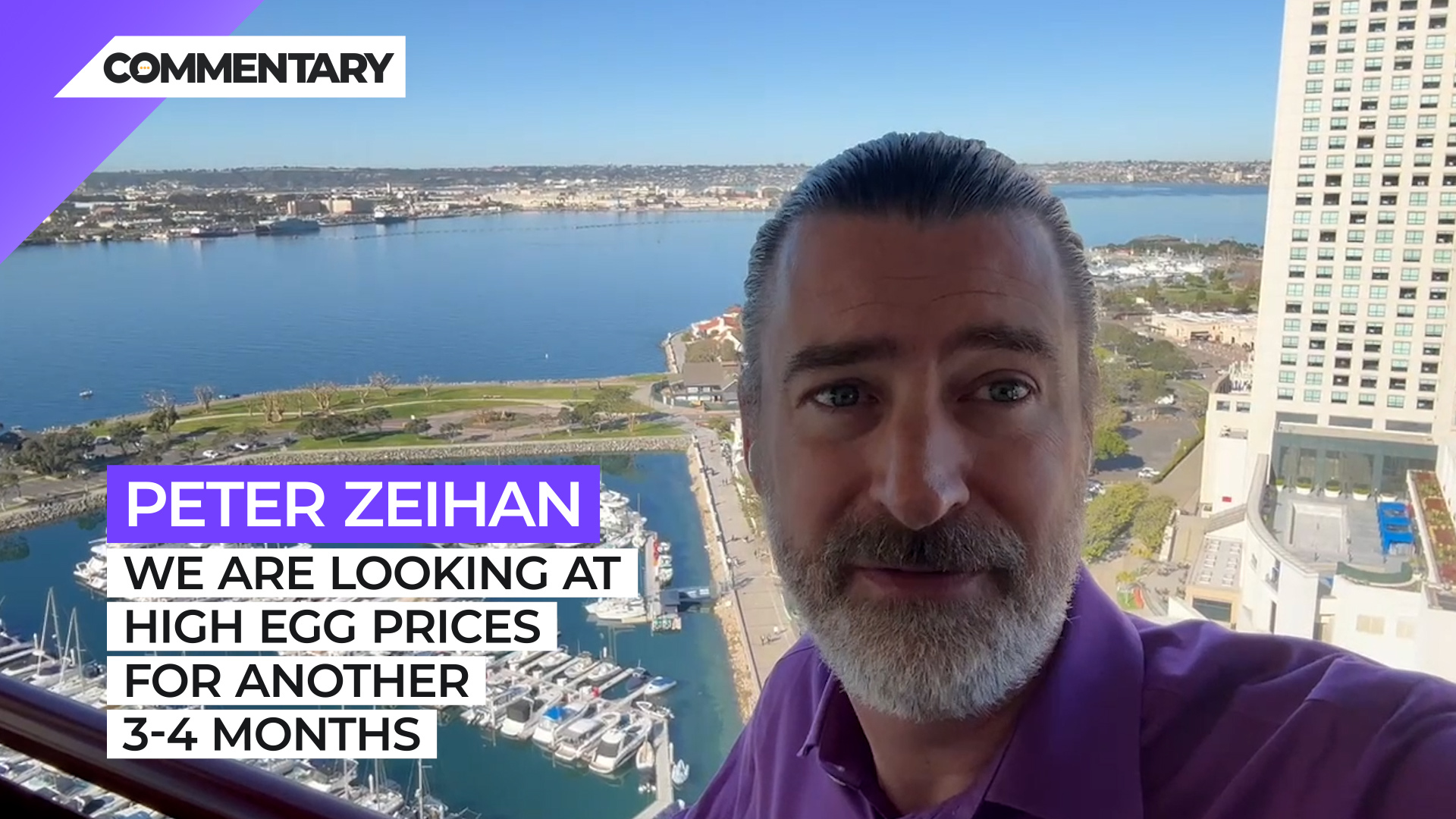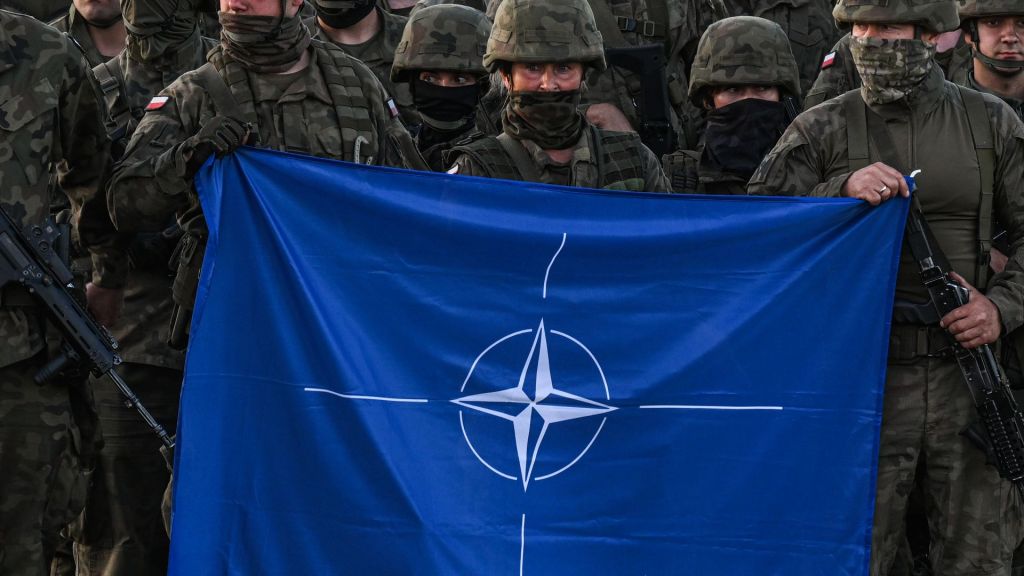
Commentary
-
Our commentary partners will help you reach your own conclusions on complex topics.
I’m still in San Diego, just had breakfast and it occurred to me that, well, we’ve all been struggling with inflation for the last several months.
But if you’ve noticed that eggs are by far the highest price thing out there right now. Based on where you are in the country, a dozen is now between $5 and $9. The reason is not because there’s been a failure of the supply chain. The reason is not because there’s a shortage of imports. The reason quite simply, is flu.
The problem with maintaining chicken populations is that chickens are birds and birds can fly, but not the chickens that we raise for eating or for raising eggs, but other birds. And since birds are mobile, they carry their bugs with them, and they crap and the crap falls out of the sky and sometimes it hits a domesticated bird.
Anyway, we had an outbreak of avian flu about a year ago. And as it roared through the Midwest and took out a lot of chickens, a lot of chicken farmers had to go through and cull their herds to prevent it from infecting anyone. Now, from the point that you decide you want more chickens, you have to do two things. Number one, you have to hold some of the eggs back so you’re talking about a reduction in output between a quarter and a half based on how fast you’re trying to repopulate. And then you got to wait because you got to raise these things. And it takes about I mean intensive, it really varies greatly based on the species, but somewhere between two and six months to raise an adult chicken to the point that it can be laying its eggs itself.
So this process started about three-four months ago, meaning we have another two to three months to go before we really get that first huge additional generation assisting, and then we can start dealing with the backlog. So we are still looking at high egg prices for another three to four months.
Now, this sort of thing is pretty common in agriculture. People forget that… when we have a shortage in something like a car, because we can’t build a spark plug or a semiconductor. Once you get the new facility online, all of the other parts can be in place and you just go through the semi-finished cars, you plug in this last piece and you’re good to go. That doesn’t work with food. If you have a food shortage, it doesn’t matter what it is, you’ve got to wait for an entire production cycle to go through. And if you’re talking about plant-based agriculture, sometimes that’s another year.
Everything has to be in place. The pesticide at the right time, the seeds at the right time, the irrigation at the right time, the fertilizers at the right time, the harvest at the right time. And if you miss any one of those pieces, if you have a yield at all, it’s going to be paltry compared to what you’re used to. And you simply have to wait for the next growing season for things to begin.
One of the things that we’re seeing in the Ukraine War right now is that the Ukrainians have been favoring corn and seed oils in this food evacuation program that they basically have with the United Nations. Ships can come in and dock at Ukrainian ports. The Russians have promised not to bomb them. And so the Ukrainians had to choose what goes in. And as a rule, corn and oil seeds generate more income for them than wheat. So that’s what they’ve been favoring. Wheat output from Ukraine has basically stopped, whereas corn is more or less where it was before the war, maybe a touch higher.
Replacing that requires some other producer someplace else, crops switching to wheat in order to plug the gap, or bringing new land online. Regardless, it takes a year. And remember, we haven’t yet seen the real disruptions to the Ukraine War because the Russians haven’t specifically targeted the ports en mass enough to disrupt large-scale exports, or really in totality. But we’re probably going to see that really soon.
By the time we get to spring, it’s going to be a different kind of war. The Russians are going to be very clearly going for the throat. Instead of targeting civilian electrical infrastructure, they’re likely to go after food production and transport. And if they do achieve a breakthrough in the southern front, they’re absolutely coming for Odessa, because that’s where most of the commerce in and out of Ukraine transits.
We’re about to lose the world’s fifth largest exporter of wheat, fourth largest exporter of corn and top oil seeds exporter. And there’s no one in the world who has the scale or the spare capacity to replace that. And even if they did, you’re talking a year out. This is going to get a lot worse before it gets better, even if the Ukrainians actually win the spring offensive to come. Alright, until next time.
-
Hurricane Helene hits US coast, Appalachia and beyond
Hurricane Helene hit Florida and Georgia overnight between Sept. 26 and 27 as a Category 4 hurricane, and accompanying storms will continue reaching deeper into the continental United States today. Dangerous flash flooding from the hurricane, known as storm surge, was some of the worst flooding that the Tampa Bay area has ever seen, and… -
Israel holds upper hand against Lebanon, Hezbollah and Iran
On Wednesday, Sept. 25, Hezbollah launched a ballistic missile at Tel Aviv in retaliation for Israel’s explosive pager attack that blew up devices across Lebanon. Although Israel’s defense systems intercepted the surface-to-surface missile, the attempted strike on Tel Aviv marked a significant escalation by Hezbollah. Since the siege on Gaza began, shortly after the Oct. 7, 2023,… -
The Sinaloa Cartel civil war
Fears of a civil war within the Sinaloa Cartel are growing as violence between competing factions within the cartel continues. The Mexican Army has dispatched around 600 elite troops to Sinaloa to help quell those fears, in addition to roughly 2,200 regular soldiers and National Guard. Watch the above video as Straight Arrow News contributor… -
New Ukrainian weapons hit Russia where it hurts
Ukrainian drones struck a major Russian ammunition depot, triggering a massive explosion that was captured on camera. According to the Ukrainian military, 2,000 tons of munitions had arrived at the depot before the attack. Over the past two years, Ukraine has significantly increased its domestic drone production, allowing it to scale up attacks on military… -
Weighing social costs vs. economic benefits on immigration
Global human migration is one of the defining elements of our current historical era, according to the United Nations. Migrants face both the incentives to leave — forced out by climate change, crime and corruption, extreme poverty or violence — and incentives for where to go, based on available job opportunities and so on. Migration…
Latest Stories
-
 Getty Images
Getty Images
Jay-Z sues sexual assault accuser and lawyer, says Roc Nation lost $20 million
-
 Getty Images
Getty Images
Democrats want DOJ attorney who dropped Eric Adams case investigated
-
 Getty Images
Getty Images
Millions of users’ personal data shared with US law enforcement: Report
-
 Getty Images
Getty Images
Republican leaders urge a pause on town hall meetings
-
 Getty Images
Getty Images
Media spins Trump, Zelenskyy Oval Office meeting: Bias Breakdown
Popular Opinions
-
In addition to the facts, we believe it’s vital to hear perspectives from all sides of the political spectrum.
Latest Opinions
In addition to the facts, we believe it’s vital to hear perspectives from all sides of the political spectrum. We hope these different voices will help you reach your own conclusions.
The opinions published in this section are solely those of the contributors and do not reflect the views of Straight Arrow News.





















Latest Commentary
We know it is important to hear from a diverse range of observers on the complex topics we face and believe our commentary partners will help you reach your own conclusions.
The commentaries published in this section are solely those of the contributors and do not reflect the views of Straight Arrow News.
Dr. Frank Luntz
Pollster and Political Analyst‘Biased’: What Americans think of ‘mainstream media’
‘Getting rid of them’: Americans discuss Trump and immigration
‘Woke’: Why some Biden 2020 voters backed Trump in 2024